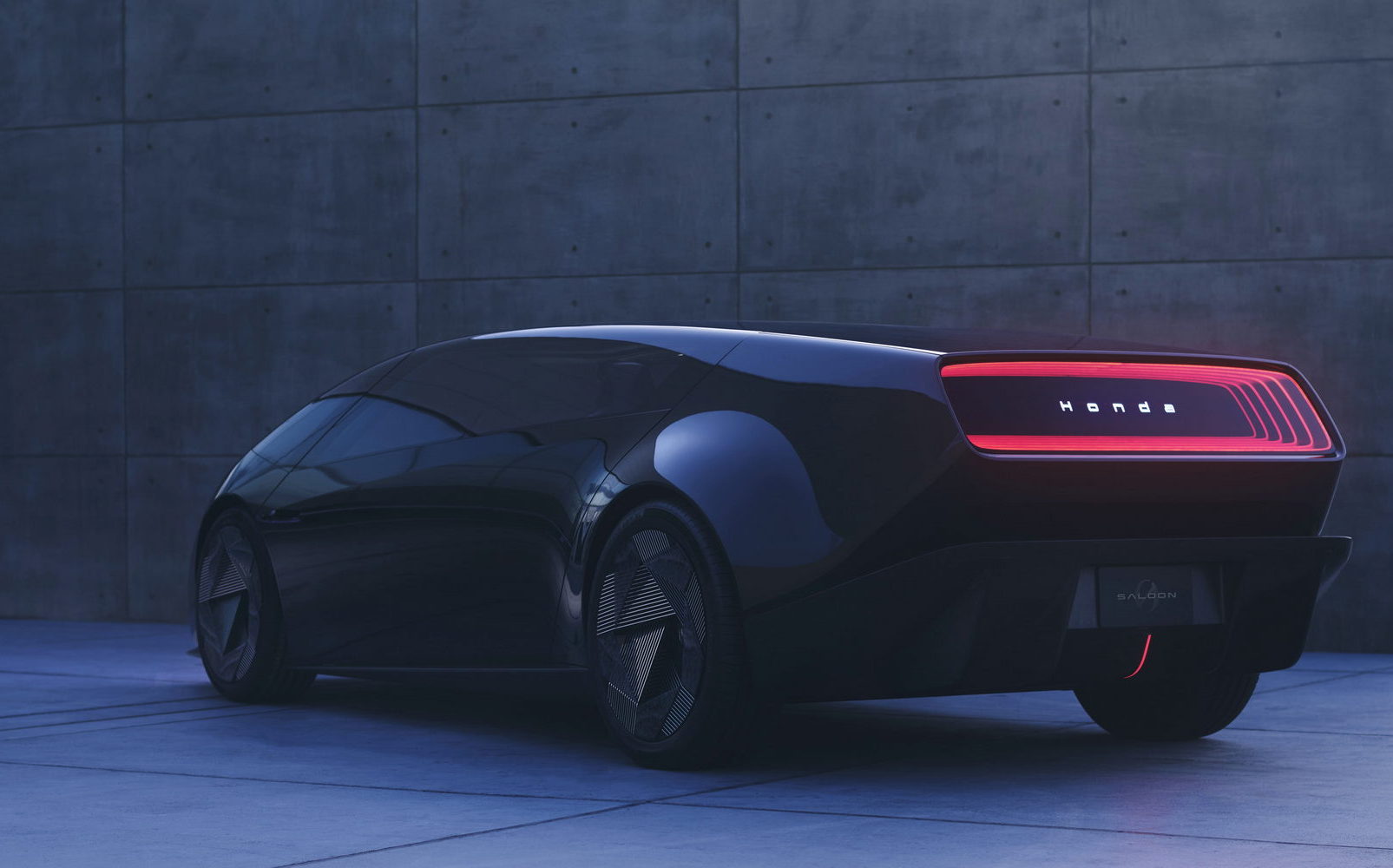Honda goes back to zero with futuristic next-gen electric saloon slated for 2026
Not the only car tech at CES
Honda has used the Consumer Electronics Show (CES) in Las Vegas to show off two next-generation electric vehicles (EVs) under the banner “0 Series”. One of these, simply called the Saloon, is expected to go on sale in 2026.
The Japanese company has pledged to be fully carbon neutral — for all its products and corporate activities — by 2050, with one of the manufacturer’s waypoints on the path being to only sell new battery EVs and hydrogen fuel-cell EVs globally by 2040.
The 0 Series cars will be the first big step in that direction, following on from Honda’s e city hatchback and e:Ny1 electric SUV.
Honda says that the decision to call its next-gen 0 Series is that it is “going back to the starting point of Honda as an automaker and creating completely new EVs from ‘zero’”.
Thin, light and wise
With the Honda 0 Series launching in North America first, before the firm’s homeland of Japan and then the rest of the world, the new EVs are built on the approach of “thin, light and wise”.
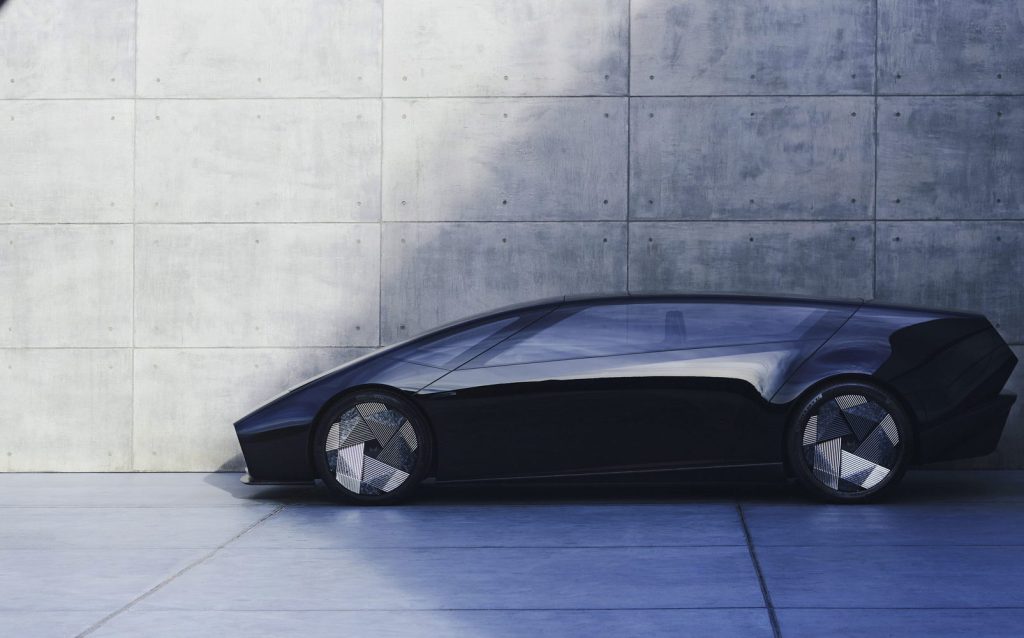
The thin part means the cars will have a low, dedicated EV platform, which in turn creates a lower floor height and thus a vehicle which is more aerodynamic — making battery range greater.
Light relates to Honda’s desire to makes its future EVs sporty and rewarding to drive, one of the hallmarks of the Japanese automotive company. The less weight an EV (or any car) has, the better for its dynamics — and efficiency.
And the wise part of the ethos relates to Honda’s use of “intelligent” technologies, including advanced driver assist systems up to Level 3 automated driving and onboard AI learning in the vehicles’ software.
Super-rapid charging times
Little concrete information has been given about the specifications of the 0 Series EVs, although Honda claims that the “e-Axles” on the cars will have “excellent power conversion efficiency”, while being teamed with high-density battery packs for as much one-shot driving range as possible.
Honda is also targeting a 15-80 per cent battery charging time of between 10 and 15 minutes.
While the technical specifications might be shrouded in secrecy, the exterior appearance and interior ambience of the 0 Series EVs are both clear to see. Going for the full futuristic look, both the 0 Series Saloon and its companion, the Space-Hub, have super-smooth bodies with only minimal detailing — perhaps the most striking of which are the hoop-shaped light clusters that dominate the ends of the vehicles.
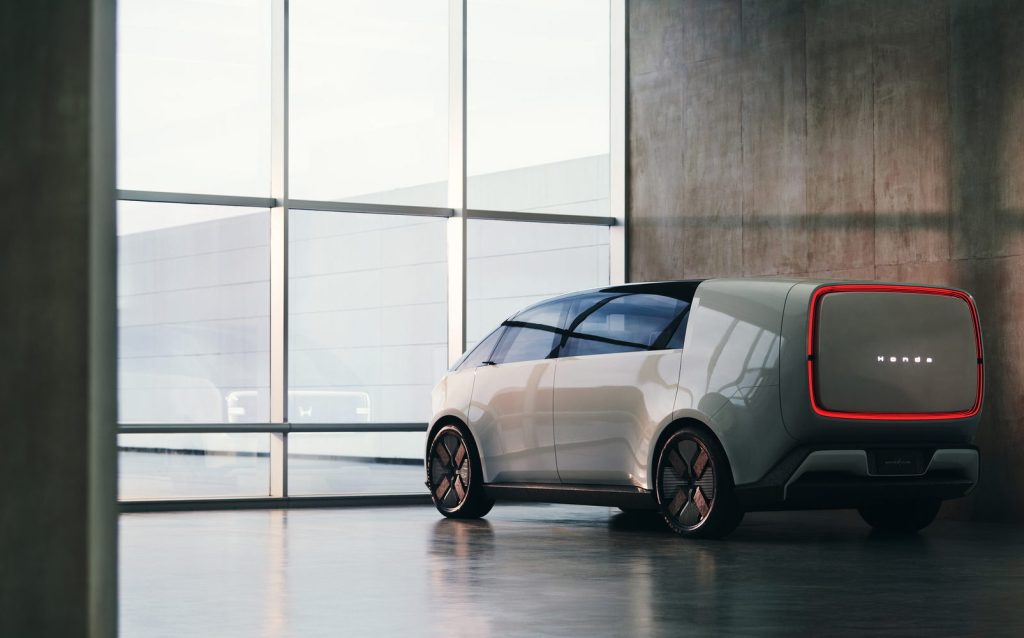
Honda calls this swoopy design concept the “Art of Resonance”, which benefits the Saloon in particular as the company says it has more interior space than the exterior proportions might suggest.
Inside the 0 Series is a stripped-back, high-tech interface that is said to provide a “sophisticated and seamless” experience for the driver.
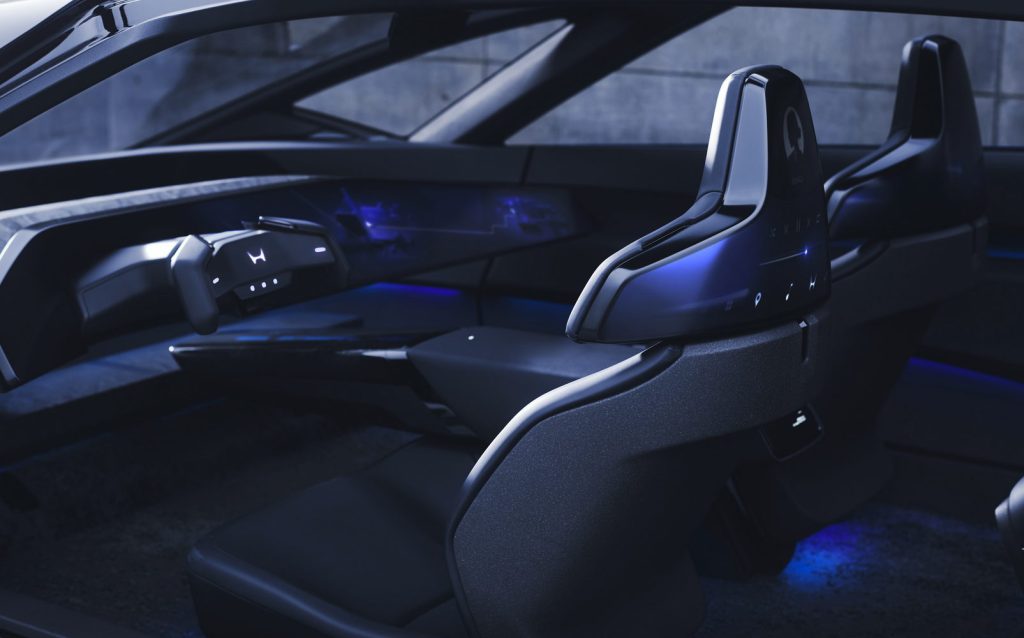
Other details Honda confirms about the 0 Series Saloon at this stage are that it will use steer-by-wire technology, while much of its construction and interior will be from sustainable materials.
New logo for future EVs
Both the 0 Series Saloon and the Space-Hub, which could follow up as an MPV production model, will also debut a new “H mark”, which is the Honda emblem.
The current version dates back to 1981, although it was refreshed slightly around the turn of the millennium. The 0 Series’ smoother, more open “H” is said to resemble two outstretched hands. It also looks much more like the company’s original logo from the 1960s, which is a neat touch.
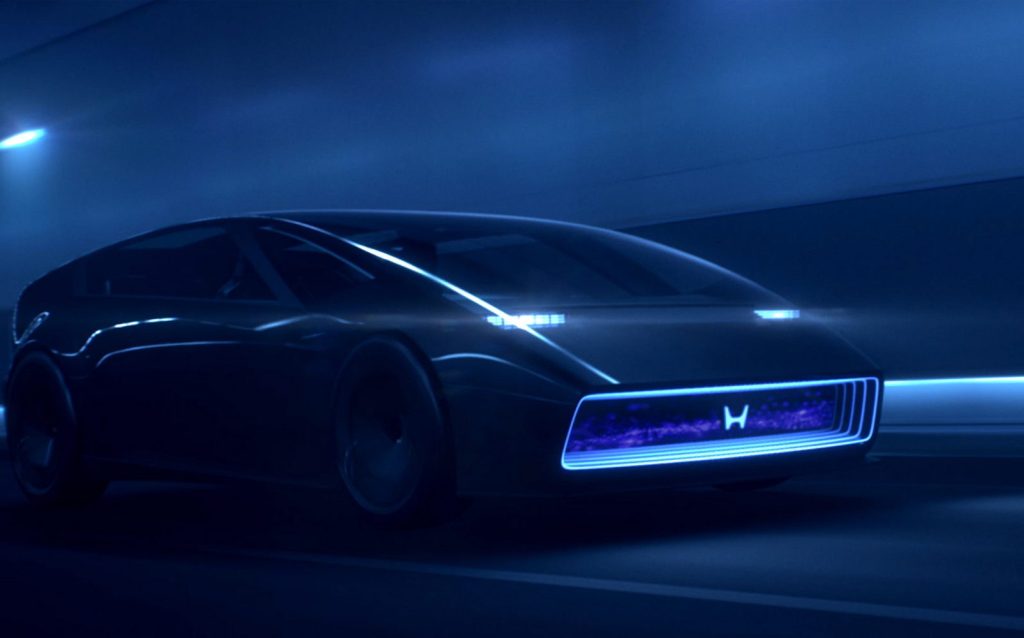
Honda officials at CES said that while the Space-Hub wasn’t yet confirmed for production, the 0 Series Saloon seen in Vegas was “90 per cent ready” and would largely keep its outlandish shape when it is eventually revealed in showroom format sometime in 2025, according to Autocar.
Other car tech announcements at CES
- Mercedes-AMG and will.i.am announced a tie-up that sees the car turned into a musical instrument. MBUX Sound Drive is said to deliver an interactive experience, with the onboard software allowing the music to react to the way the vehicle is being driven. Speeding up, for example, increases the beat. Using this and the way the car steers and brakes, drivers can create their own tunes for an open music platform. Read more at thetimes.co.uk (subscription required).
- Kia has visions of an ultra-connected “smart city” one day in the future, with its freshly announced PBV commercial vehicles integrated into it. A neat video showing how the PV5 and PV1 would speedily and autonomously deliver a dress from a warehouse to a customer in double-quick time, with carefully co-ordinated drop-offs and pick-ups managed by overarching software control systems, suggests a fully digital age of urban living could be just around the corner. Read our article here.
- Google used CES to confirm that its Android Auto technology is getting an upgrade. Any EVs that feature Android Auto will now be able to share their real-time battery level with the system, meaning that Google Maps can then show the driver how much charge will be left in the battery when the vehicle arrives at its destination. Google Maps will also be able to use this information to suggest charging stops and their necessary replenishment time along the route, while you’ll also be more easily able to send trips from Google Maps on Android and iOS smart devices to the in-car infotainment. Google is also adding the Chrome app for Google Built-in, to enhance the internet browsing experience in the vehicle.
Related articles
- If you were interested in the car news from CES 2024, you might like to read our review of the Honda e:Ny1
- Take a look a Will Dron’s preview of the 872bhp Polestar 5
- And click here if you want to see our guide to all the car makers’ electric vehicle plans
Latest articles
- Aston Martin Valkyrie AMR-LMH hypercar hits track ahead of 2025 Le Mans challenge
- Porsche has begun testing the electric Cayenne
- Cupra Leon 272 eHybrid 2024 review: Bigger battery, better tech … but is it a Cupra?
- Porsche 911 GTS 2024 review: Hybrid heresy or more Stuttgart genius?
- Extended test: 2023 Vauxhall Astra Sports Tourer GS PHEV
- Ford Capri revival has faced a lot of flak… but are buyers put off? Here’s what visitors to the Festival of Speed had to say
- F1 2024 calendar and race reports: What time the next grand prix starts and what happened in the previous rounds
- ‘No timeframe’ for how long Volvo’s returning estate cars will be on sale in UK
- Kia Picanto 2024 review: Updates add spice to cute Korean city car


